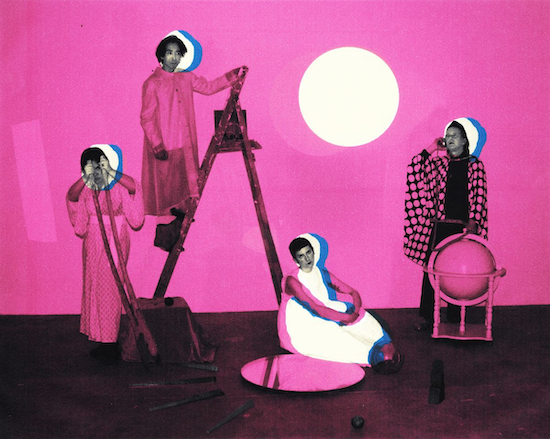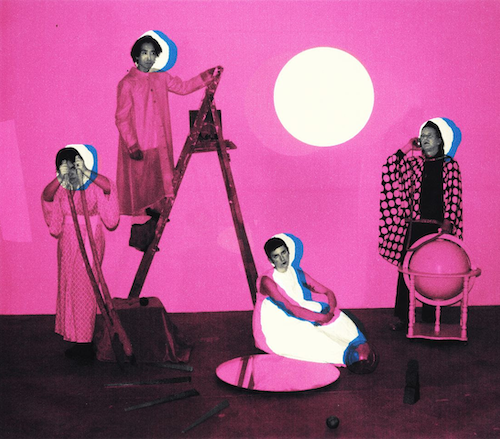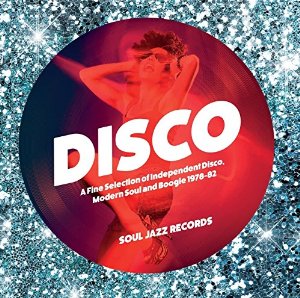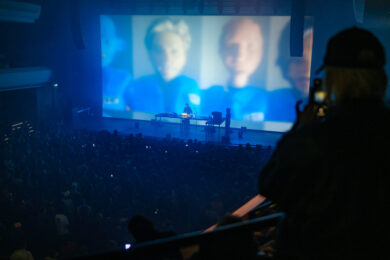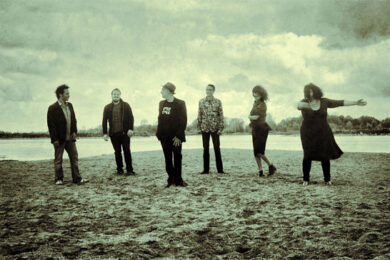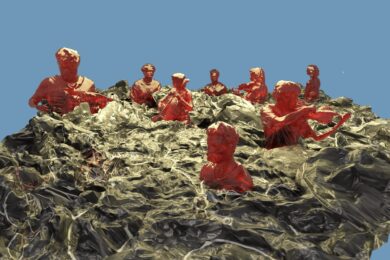Photo by Arthur Sajas
To receive Singularity track ‘Tell Me Not Here’ by Vanishing Twin become a Quietus Sound & Vision subscriber
For ‘Tell Me Not Here’, commissioned by The Quietus exclusively for Sound + Vision subscribers, Vanishing Twin fly deeper into their sonic universe, blending elements from an improvisational session, raw recordings of the natural world, and early 20th century poetry to create sublime, cosmic pop. Speaking to The Quietus from Saint-Malo, France, the band’s Valentina Magaletti and Cathy Lucas detail the makings of this nearly twenty-minute piece with embellishments of sparkling synth and lyrical vignettes reminiscent of English folk melodies, with lyrics adapted from A.E. Housman’s 1922 poem, ‘Tell Me Not Here, It Needs Not Saying’.
“I think a field recording, and any other source that is not the conventional one, is always refreshing,” says Magaletti. “It’s sonic determinism, I guess. ‘The more the merrier’ when you have outsourced stuff that you’ve been intrigued by. You just press record on your phone, or on Zoom, because that’s likely to add another sonic dimension of what you already do with conventional instruments.”
Rich in texture and depth, ‘Tell Me Not Here’ brims with samples and sounds from a range of organic and technological sources. A stretched radio blip here, a chorus of bird caws and forest noises there. “Susumu [Mukai, Vanishing Twin bassist] has this radio, and I think it wasn’t so much about the content as it was about wanting the sound of that radio,” explains Lucas. “We wanted to use a radio as an instrument, so it was more about the texture of it and the frequency you get when you’re tuning through.” As for the bird sounds, “that was recorded in a group performance I did in the south of France called, L’enfant des jardins. My partner made a recording of that. We all have recordings of things on our phones and on cassettes,” says Lucas.
Magaletti adds: “Me and Susumu used to record as a joke, as an exercise, the walk between our places and the studio.” She describes some examples from their collection of field recordings: sounds picked up from a church, bicycle wheels (“recorded extensively”), and a boat. “You know, there’s all sorts of stuff out there in reality,” Magaletti continues. “The iPhone as a device really helps because it makes things really easy. It’s got a decent mic. You’re likely to have fun if you have the privilege and the chance to then go into the studio and process those sounds. They’re likely to turn into something interesting.”
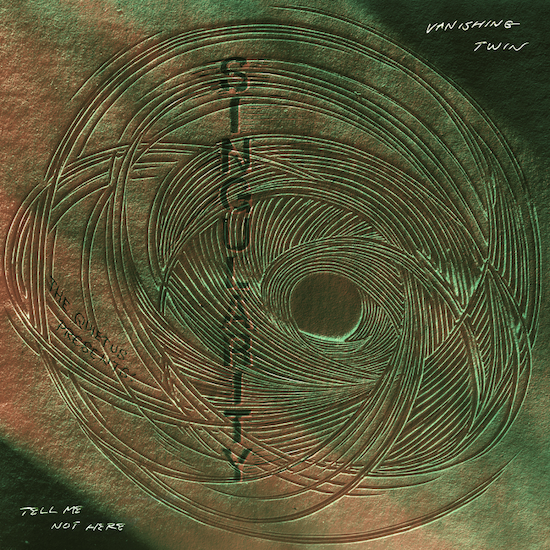
I’m talking to Lucas and Magaletti from my home in Alabama, where it’s a balmy early morning, and the sun has yet to rise. The symphony of insect noises outside my apartment –crickets and katydids, specifically – is suddenly full of inspiration.
The track expands around the scene set in Housman’s poem, where he observes the alluring yet distant and cold objectivity of nature. Lucas points out that the choice of lyrical source material was inspired by her trip to the south of France and walking through the region’s forests. “I’ve never adapted a full poem to music like that,” she says. “That’s the first time I’ve done that. There’s something about the way that it’s written and is very song-like. It’s very evocative of English folk music in a way that speaks to all of us, so it clicked in that way. My other uses of poetry have been more like references, rather than adapting in that way.”
While the adaptation of poetry is a first for the group, they are no strangers to creating sprawling, densely textured music of otherworldly proportions. The Quietus asked them to create something that was hypnotic, something that played with a lengthy duration. “Instantly we knew we wanted to participate, because it spoke to something that we already do,” Lucas says. “Over a longer time, you can really develop something. It’s a natural way of working for us, because we improvise a lot together, so when you just play you can let something evolve naturally.”
Lucas explains that ‘Tell Me Not Here’ was built upon an unfinished improvisational piece that already existed, but wasn’t expected to land on their next record. “We started off with just a jam that I had done on my own with a drum machine in my old studio,” she says. “It was about 45 minutes originally. It was this very long piece, and we weren’t really sure where it was going or what to do with it, but I was sure that it would need the element of the band. Then me and Susumu did a session where we both improvised the percussion of it, and then that was the point where we got the call from The Quietus and we said, ‘OK, let’s use this one.’ Then we did a session with all three of us, all playing different instruments, all recording at the same time, really listening and reacting to each other. We had to shorten it, of course, so we cut the beginning and the end off.”
No matter the end destination for a piece, improvisation and exploration within their natural frequency is paramount to the group’s creative process. “Even something short, we feel things out very naturally and instinctively, and see where they go,” says Lucas. “The more compositional approach–marking out sections, chords, or lyrics–comes a bit later.”
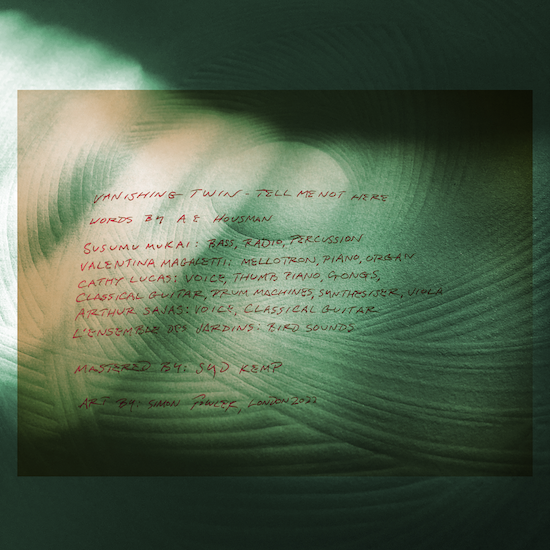
At this point, Vanishing Twin’s sessions feel like the stuff of psych legend. The group has journeyed to isolated destinations to inspire creativity and performed intensive group exercises to provide inspiration. With such a deep commitment to the process of improvisation, I wonder how they determine what material makes the final cut. Lucas explains, “The beginning was probably the hardest bit to edit because of the natural flow and improvisation that kind of picks up as you go along.” Magaletti adds, “I guess there’s not much of a formula to know when the piece is done. When we feel it out in the room, and it feels like it sounds good, that is when we think ‘OK, that’s perfect.’”
Vanishing Twin is almost just as much a visual project as a musical one, with each record cycle presenting a cohesive aesthetic vision, colour palette, and motifs. Says Magaletti, “Dada or surrealism, those artists really inform our aesthetic.” The group is refined in how they carry their references. Never too obvious, but always fresh and a bit playful. I ask them about the act of play, and how an element of fun factors into their work process. Magaletti replies, “Fun, I guess, is really loving what we do, there’s never a question of doing something because we have to. We have to love what we do. We’re always wanting to see things outside the frame. We’re against convention.”
To receive ‘Tell Me Not Here’ by Vanishing Twin, as well as a host of other benefits including exclusive essays, podcasts and playlists, and loads more specially-commissioned music, become a Quietus Sound & Vision subscriber. You can do so here

